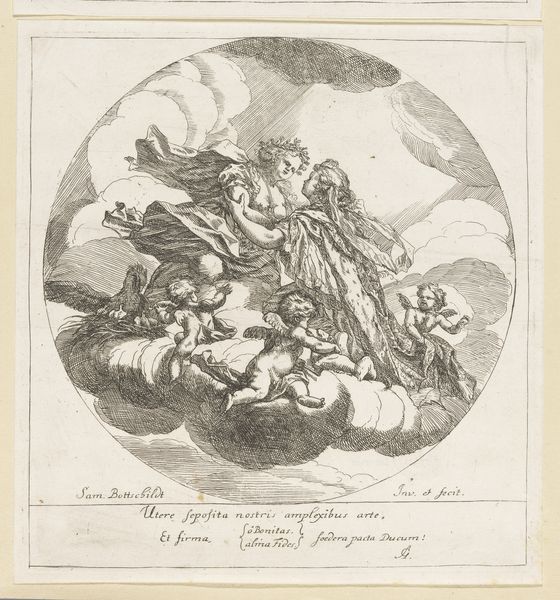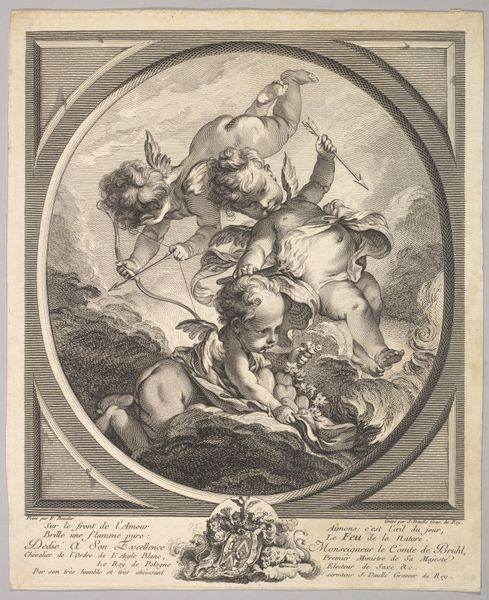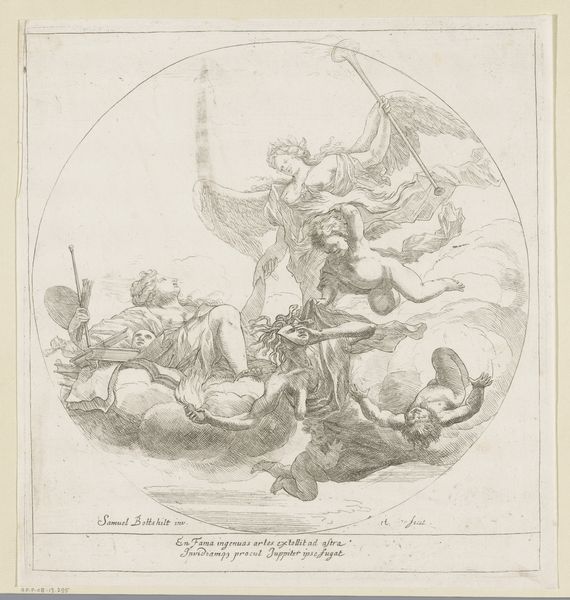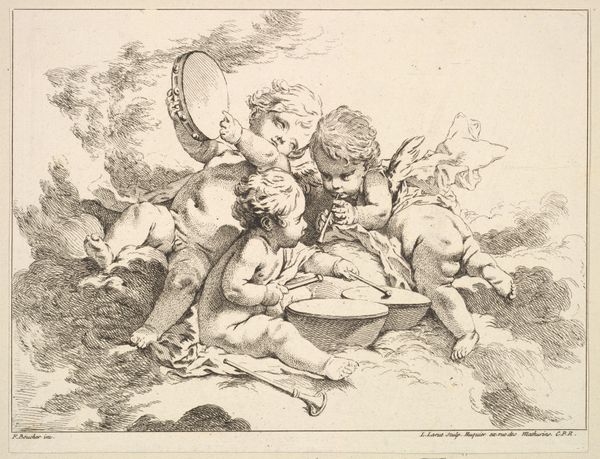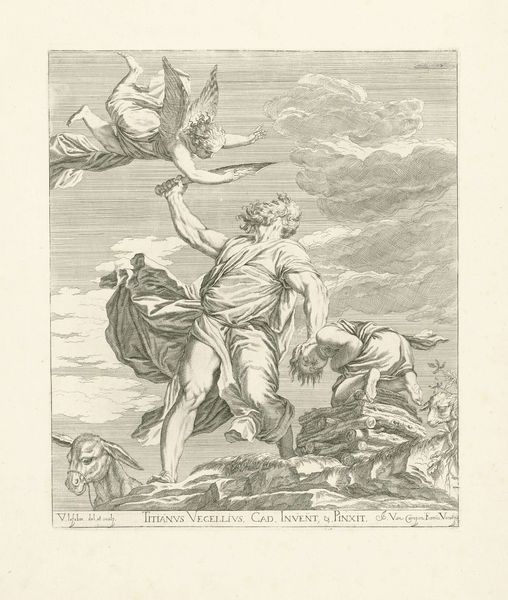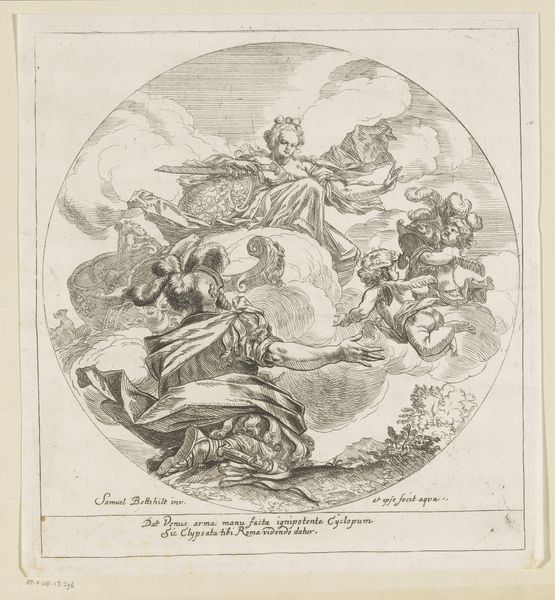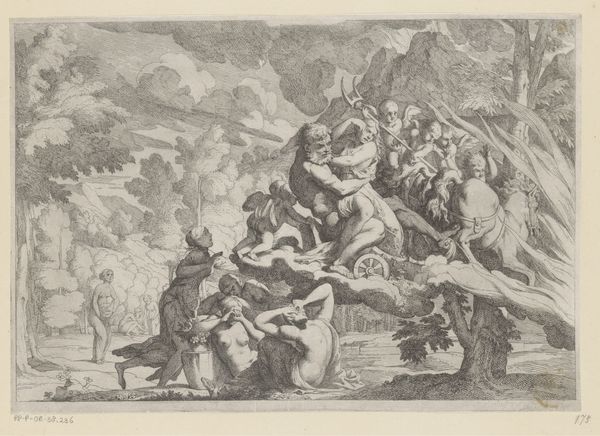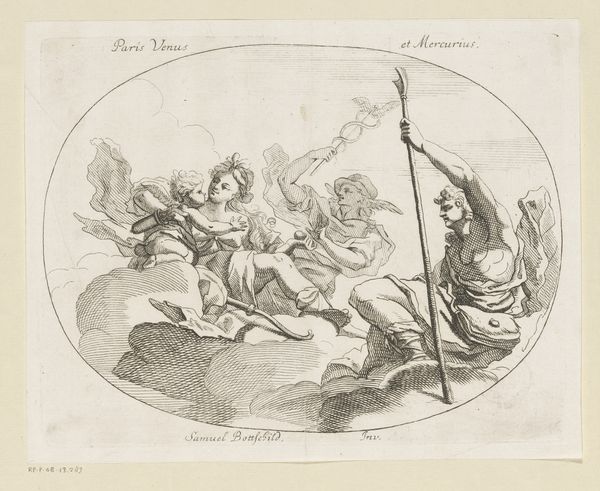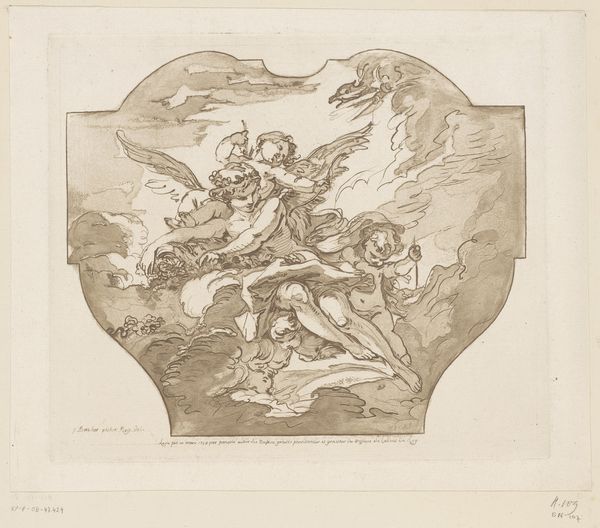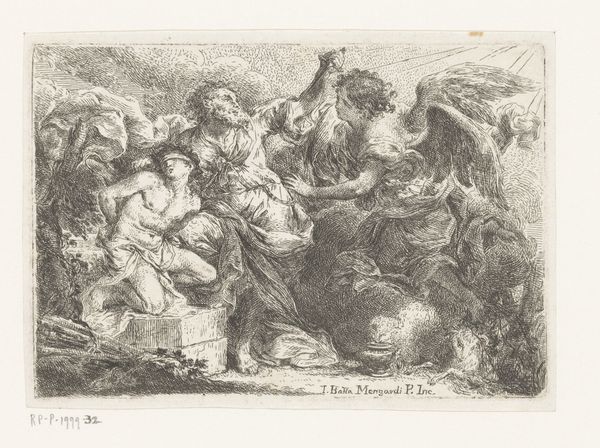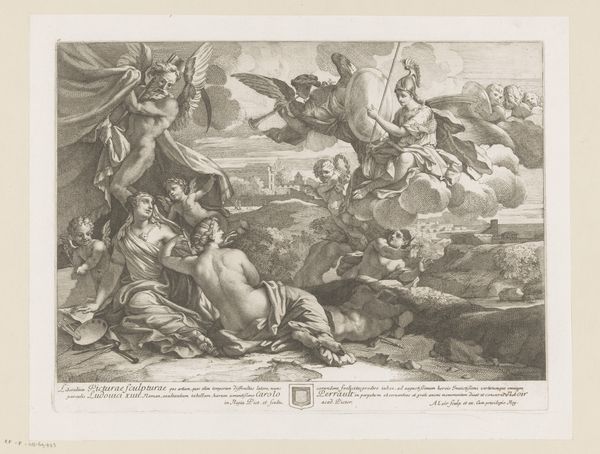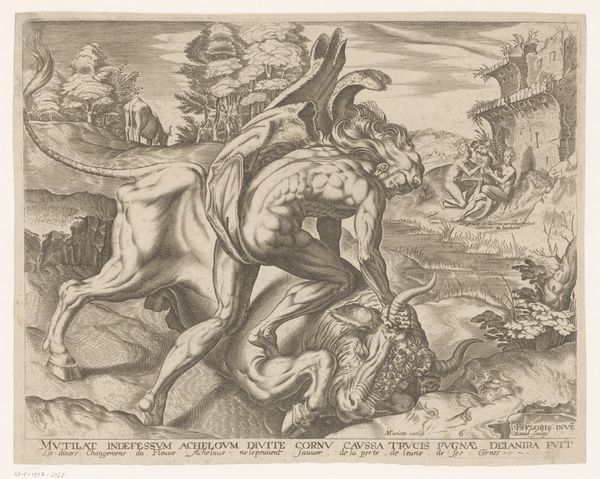
print, engraving
#
narrative-art
#
baroque
# print
#
pen sketch
#
pencil sketch
#
old engraving style
#
figuration
#
history-painting
#
engraving
Dimensions: height 176 mm, width 238 mm
Copyright: Rijks Museum: Open Domain
This etching by Samuel Bottschild, created around the 17th century, shows Aeneas carrying his father Anchises on his back, escaping the burning city of Troy. This iconic scene, deeply rooted in Virgil’s Aeneid, encapsulates pietas—the Roman virtue of duty to family, gods, and country. The motif of carrying one's elders appears across cultures, echoing the fundamental human value of filial piety. We see reflections in ancient Egyptian art, where depictions of pharaohs caring for their ancestors emphasize continuity and divine right. This theme evokes a deep-seated psychological resonance: the weight of tradition, the burden of responsibility, and the subconscious desire to honor our lineage. It represents a collective memory of respect for elders, resonating with our primal understanding of family bonds and the cycle of life. Aeneas's act embodies the emotional weight of preserving cultural heritage, a poignant symbol that continues to resurface throughout history. This symbol evolves, adapting to new contexts, and echoing the timeless human need to connect with our past.
Comments
No comments
Be the first to comment and join the conversation on the ultimate creative platform.
